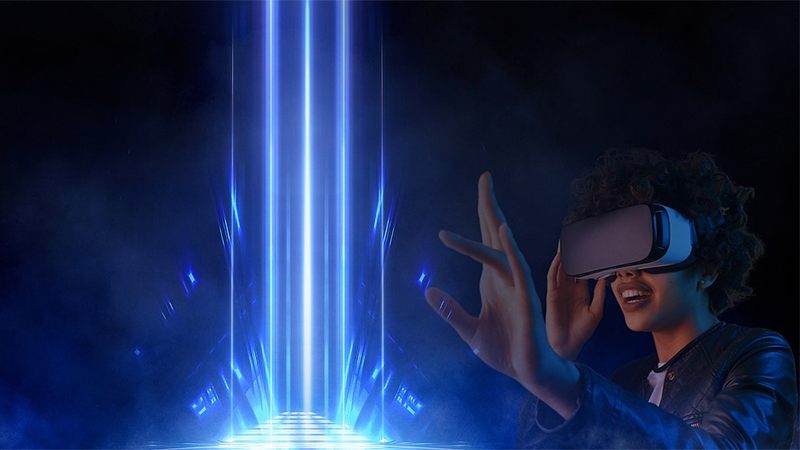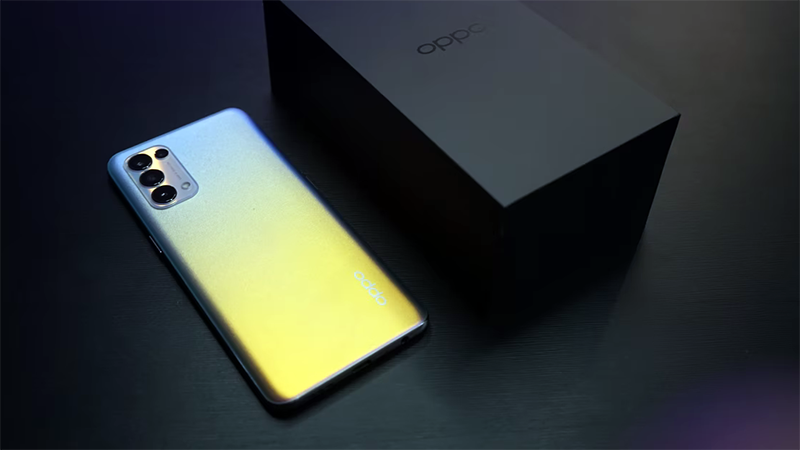
Get ready for the metaverse
The metaverse may well overpromise and underdeliver, but amid the hyperbole, it does have properties that will have a significant effect on consumer devices.
The metaverse is not a new concept, but it has recently come under the spotlight after Facebook changed its name to Meta. For most people, the idea of the metaverse may seem daunting and futuristic, like something from The Matrix. Despite the hyperbole, the final form of the metaverse is still unclear, but it does have properties that allow us to infer its future impact on technology industries.
What is the metaverse?
The metaverse is designed to be a hyper-visualization of the Internet – a layer of reality above our material world, where people will be able to work, play and socialize, and where actions and consequences will exist identically in both online and offline domains. As the metaverse needs a substantial number of users, it is likely to offer a flexible range of entry points. Traditional entry points include smartphones and PCs, used today to enter videogames. These entry points would enable users to guide personalized avatars through various virtual spaces. But the next phase of entry points will include Virtual Reality (VR) and Augmented Reality (AR) devices. These immersive devices represent the long-term future of metaverse access. Once inside the metaverse, users will access a variety of virtual spaces created by individuals and businesses alike, in the way that we currently access web sites on the Internet.
Laying the groundwork for a metaverse
The groundwork for the metaverse is already in place. Consumers are showing positive engagement with digitalized versions of physical products, and many brands have capitalized on this.
Gucci recently sold a digital-only bag for over US$4,000 in the videogame Roblox, which cost more than the equivalent physical bag. Nike is selling virtual Jordan sneakers in Fortnite, and Coca-Cola has started selling virtual wearables in Decentraland. In February 2021, the non-fungible token (NFT) marketplace RTFKT sold over 600 pairs of digital sneakers, generating US$3.1 million in sales in under seven minutes. While many have speculated that digital assets such as NFTs are a bubble, these virtual commodities reflect a much deeper transition from our standard definition of ownership to a digital one. As individuals shift their lives onto digital platforms, it is inevitable that they will begin carrying over their possessions too. They can receive the same gratification of owning a Gucci bag or an Andy Warhol painting without restricting their physical space, especially if blockchain can be used to uphold the concept of scarcity. The market for virtual goods is here to stay and will continue to grow.
Even in China, where the government is aiming to limit gaming for certain demographics, Chinese technology leaders have made steady progress. Tmall, Taobao and WeChat have already established metaverse precursors, such as interactive digital malls and platforms for virtual influencers, such as Ling, who has been able to secure partnerships with leading brands such as Vogue and Tesla.
The technology industry is getting ready for the metaverse by investing in VR and AR projects. Epic Games, the creator of Fortnite, raised US$1 billion for its metaverse projects, with Sony putting forward US$200 million for that funding round. Facebook has allocated considerable resources and invested close to US$10 billion in its new AR/VR division, Reality Labs.
There is clearly demand for digital possessions and, by extension, consumers will also invest in hardware, such as smartphones, PCs and AR/VR devices that are specifically designed to support the metaverse.
How will consumer devices be affected?
The role of devices in maintaining daily routines, as well as physical, mental and social wellbeing, has become normalized during the pandemic. Demand for virtual experiences has driven a surge in demand for devices such as PCs and tablets.
AR has become a valuable tool with a rise in “try before you buy” experiences. By using a smartphone, customers can preview products from the safety of their homes, from household names, such as IKEA and Home Depot, to luxury brands, such as Gucci and Louis Vuitton. It is vital for the next generation of smart devices to support quality virtual experiences, and we will continue to see smartphone and PC brands place greater emphasis on cameras, displays, processors and software to support AR technology and experiences.
As society integrates itself deeper into the metaverse, hardware must become resistant to wear and tear. As people use devices for longer per day, and the use increasingly needs movement to create immersion, devices must be more robust to sustain an acceptable lifecycle. In the long term, the aesthetic of physical devices may be deprioritized in favor of build quality and sustainability, which itself is an apt metaphor for the growing value of digital assets over physical ones. In addition to this, device maintenance will emerge as a major opportunity for hardware vendors and third parties. Warranties, servicing, product support, asset recovery and other lifecycle services will be essential to keep users up and running in the metaverse.
Blockchain-based assets, such as cryptocurrencies and NFTs, will also play a key role in reshaping the future of consumer devices. Blockchain-based currency is well positioned to become the liquid capital of the metaverse, and virtual spaces such as casinos and theme parks are already being expanded. But a unit of cryptocurrency is not a pure cloud-based asset. It can also have a physical location. It is conceivable, then, that device manufacturers could preload devices with their own blockchain-based assets. As a hypothetical example, Samsung could ship each new Galaxy smartphone preloaded with a unit of its own cryptocurrency, for use on other Samsung products and devices. Or it could preload phones with a smart contract to ensure the authenticity of that device. As a prerequisite, its devices would need to be capable of acting as a physical wallet for cryptocurrency.
The metaverse is still a growing concept. It may yet overpromise and underdeliver. Only 38% of consumers worldwide have heard the term, and fewer still have a grasp of its implications. It is not a revolution that will bring immediate change, but a giant wheel that has set in motion a potential future. But consumer device manufacturers cannot afford to be left behind. If it does emerge to fulfil its potential, the metaverse will drastically alter the types of devices that consumers prioritize.
Share this article
CATEGORY
- All
- Canalys Forums
- Canalys Forums,Channels
- Canalys Forums,Channels,Partner Program
- Canalys Forums,Channels,Sustainability
- Canalys Forums,Sustainability
- Enterprise
- Market
- Market,Canalys Forums,Channels
- Market,Canalys Forums,Channels,Cloud
- Market,Canalys Forums,Channels,Sustainability
- Market,Channels,PC
- Market,PC
- Market,Smartphone
- Market,Technology,AR/XR/VR
- Market,Technology,Automotive
- Market,Technology,Canalys Forums,Channels
- Market,Technology,Canalys Forums,Channels,Cloud
- Market,Technology,Channels
- Market,Technology,Channels,Cloud,Partner Program
- Market,Technology,Smart Personal Audio
- Market,Technology,Smart Speaker
- Market,Technology,Smartphone
- Smart Personal Audio
- Smartphone
- Technology
- Technology,Canalys Forums,Channels,Security
- Technology,Channels
- Technology,Channels,Cloud,Partner Program
- Technology,Channels,Partner Program
- Technology,Unified Communications
- Technology,Wearable Band

